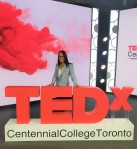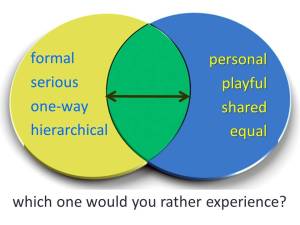
https://www.youtube.com/watch?v=ZtFUoA_0fwE
In October of 2019 I had the honour of joining an extraordinary roster of thought leaders and change-makers on the TEDx Centennial College stage in Toronto, Canada. It was a testament to the determination and creativity of the event team that it happened at all in the midst of Toronto’s COVID19 lockdown. The original event was scheduled for spring of 2020, and a silver lining was some added time to further refine and ‘sculpt’ my message focused on radical self-leadership as an antidote to self-doubt and imposter syndrome.
First coined in the 1970s, research shows that imposter syndrome is widespread, with one study showing that about 70% of us experience it at one time or another. Later research suggests that imposter syndrome may be especially prevalent among students and academics, as well as individuals whose gender, ethnicity, or identity, makes them a minority in the workplace. For instance, have you ever felt like your colleagues seem to know exactly what they’re doing, while you’re in ‘fake it till you make it’ mode? The irony is that we all keep it a secret…as if everyone else around us is waking up and going about their lives secure in the assurance that they’re fully skilled and fabulously successful, when chances are they’re feeling exactly the same way you are!
Self-doubt – radical or otherwise – distracts us and robs us of the ability to be fully present to ourselves and others. Taken to an extreme, it can undermine the joy that we take in our work and relationships. The idea of three essential practices (and the analogy of a simple, wooden, three-legged stool) to actualize our full potential initially stemmed from my experience in the classroom. In talking about the ‘three-legged stool’ (the three practices) with students over the course of many years, I had to wonder whether perhaps what works so well in university could be equally true long after graduation.
I posted about the three-legged stool in 2012 as “three secrets to success in school – and life“. Since then, those three essential practices – show up, pay attention, do your homework – have taken on an even deeper and more expansive meaning. The three-legged stool didn’t just help my students. It gave me a tangible way to banish that self-defeating, inside voice. Now, when those doubts creep in (“Am I smart enough?” “Do I really have what it takes?”), I get a picture in my mind of the three-legged stool and that gets me out of my head, and guides me towards positive action.
My TEDx talk (link above and here) gave me an opportunity to dig into the three practices in a deeper way and explore the multiple dimensions of what it means to truly show up, pay attention, and do your homework. For example, showing up is more a philosophy of service than a concrete physical action, and poses the question of what it means to show up for ourselves and others on a daily basis. Paying attention references the endless endeavor of engaging with people and the world around us. Doing our homework represents looking for that ‘something extra’ we can all do – i.e. homework with ourselves, our colleagues, our loved ones.
And this is the real secret: you have to do all three of these practices with consistency in order to stay balanced. It’s a three-legged stool after all, and sawing or chipping away at one or more of the legs of the stool makes it tip and teeter; while hacking away at the stool itself means we’ll probably fall off altogether. Over the last decade, I’ve been amazed at the secrets that the little three-legged stool has revealed, the dreams it has helped me fulfill, and the difference I’ve been able to make.
So here’s the big question: How well are you balanced on your own three-legged stool? At their heart these three practices aren’t just a recipe for success in school, or at work, or even success in life. They’re ingredients for radical self-leadership: realizing your full and highest potential, and making the most of all that you have to offer.
If this global pandemic has taught us anything, it’s that life is short and it’s precious: show up, pay attention, and don’t forget your homework!











 Constructivism marked a shift from teacher-centred to student-centred learning, deemphasizing informing (memorizing facts) in favour of transforming: locating, critiquing and synthesizing knowledge in a culture of collaboration and sharing. Curriculum development is based on student query, which acknowledges that students learn more by asking questions than by answering them. In this model, students critically engage with course material by posing questions that further group reflection and debate. Adult learning (andragogy) and critical approaches extend and complement contructivist learning models.
Constructivism marked a shift from teacher-centred to student-centred learning, deemphasizing informing (memorizing facts) in favour of transforming: locating, critiquing and synthesizing knowledge in a culture of collaboration and sharing. Curriculum development is based on student query, which acknowledges that students learn more by asking questions than by answering them. In this model, students critically engage with course material by posing questions that further group reflection and debate. Adult learning (andragogy) and critical approaches extend and complement contructivist learning models. (3) decentred and (4) non-linear. These characteristics map onto social media applications and the democratization of knowledge and information. Heutagogical and paragogical approaches also extend traditional andragogical and adult learning frameworks by emphasizing meta learning, or learning how to learn.
(3) decentred and (4) non-linear. These characteristics map onto social media applications and the democratization of knowledge and information. Heutagogical and paragogical approaches also extend traditional andragogical and adult learning frameworks by emphasizing meta learning, or learning how to learn.






